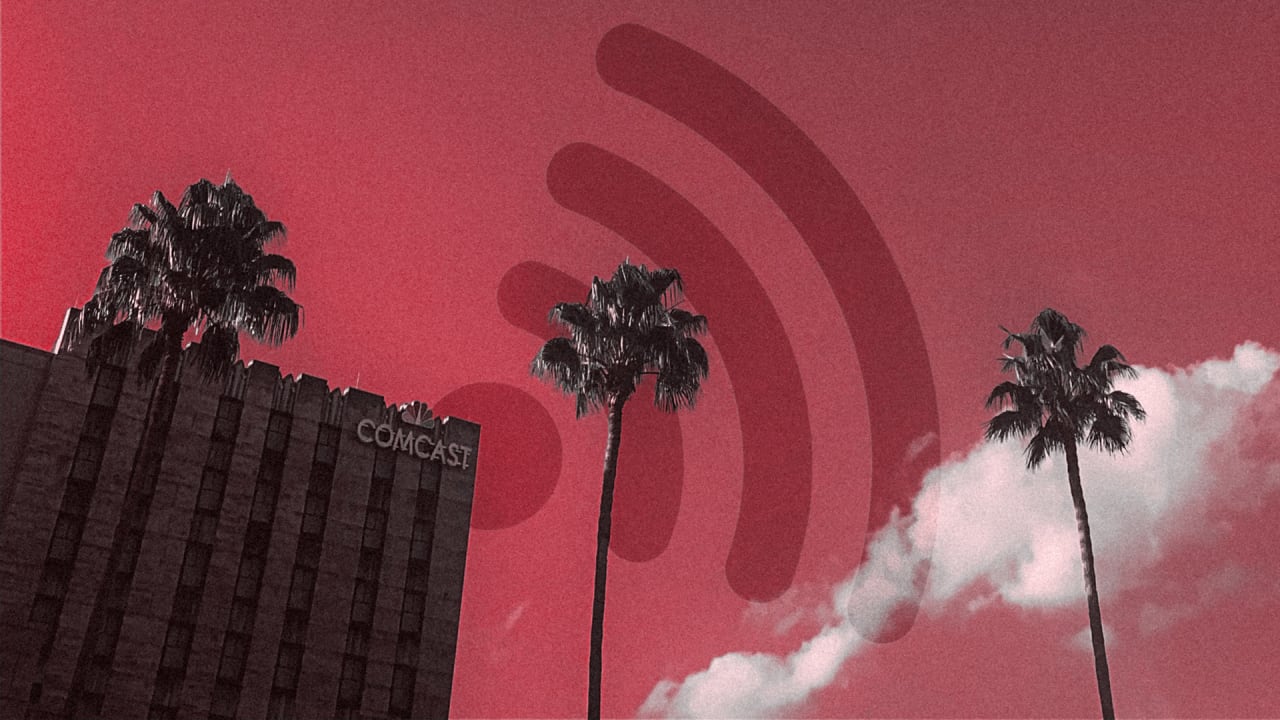
For years, Comcast and other cable companies have leaned on a simple strategy to offset the effects of cord-cutting: Charge a steep price on home internet service, and enjoy soaring profits thanks to little or no competition.
That strategy may now be in jeopardy. Comcast’s internet subscriber growth was essentially flat last quarter, while Charter lost 21,000 Spectrum internet subscribers. For both companies, it’s the first time they’ve failed to grow their home internet businesses in a given quarter.
The reason isn’t a mystery, either: All around the country, T-Mobile and Verizon have been rolling out cheap home internet service powered by their 5G networks, at last giving customers an alternative where none previously existed. In an earnings call, Comcast CEO Brian Roberts pointed to those carriers as a reason its broadband growth has hit a wall.
It’s a rude awakening for cable companies, whose broadband monopolies in many markets have allowed them to raise prices—and, in Comcast’s case, enforce data caps. While Comcast and Charter have tried to downplay the threat posed by wireless home internet, experts say the competition is here to stay.
“Across the nation, all sorts of internet service providers have gained two new competitors,” says Kristen Hanich, the research director for Parks Associates, referring to T-Mobile and Verizon. “They need to prepare for that accordingly.”
Wireless home internet is cheaper
Both T-Mobile and Verizon are undercutting cable companies on pricing. T-Mobile, for instance, charges $50 per month for home internet, with typical download speeds ranging from 33-182 Mbps. Verizon also charges $50 per month with download speeds ranging from 85 Mbps to 300 Mbps according to CNet, and it cuts the price in half for customers who bundle smartphone service.
By comparison, Comcast’s non-promotional internet prices start at $99 per month, and Spectrum’s non-promotional internet service starts at $75 per month.
While the wireless offerings aren’t new, T-Mobile and Verizon have both been expanding to more markets, increasing speeds with mid-band 5G, and marketing their services more aggressively. T-Mobile even aired a commercial for home internet service during the Super Bowl.
Subscriber growth has surged accordingly. T-Mobile now has more than one million home internet subscribers, and added 560,000 in the last quarter alone. Verizon has 384,000 wireless home internet subscribers, two thirds of which came in the last quarter.
“That puts [T-Mobile] at about the 10th largest internet service provider in the United States, basically coming out of nothing a year or so ago,” Hanich says.
Can it compete?
T-Mobile and Verizon can’t cannibalize cable internet overnight. People generally consume much more data at home than they do while out and about on their phones, and because wireless carriers are sending all that data through the same airwaves, they must be more mindful of network congestion.
That means either limiting how many new subscribers they take in or discouraging heavy use through data caps. To that end, T-Mobile recently introduced a version of its service with data caps in markets where it’s concerned about congestion. (Verizon, for now, hasn’t capped data use in any of its home internet markets.)
All this has led to some skepticism among analysts about the carriers’ growth targets. T-Mobile hopes to have between seven million and eight million home internet subscribers by 2025, while Verizon hopes to have four million to five million by then. Comcast and Charter currently have 32.2 million and 30 million internet subscribers, respectively.
Peter Rysavy, the president of telecom analyst firm Rysavy Research, says that even if the wireless carriers don’t completely displace cable internet, they should have enough capacity to support millions of subscribers.
“The consequence is that the market will be more competitive, and that the cable operators do have to evaluate what the implications are in the long term,” he says.
Rysavy also believes the current version of 5G home internet is just a stepping stone. In most markets, T-Mobile and Verizon are relying on either low-band or mid-band 5G, but Rysavy is bullish on the future promise of mmWave 5G networks, which can rival the speeds of fiber internet service.
Carriers have been slow to adopt mmWave because of its short range and limited ability to penetrate buildings, but Rysavy points to several technology improvements on the horizon that will make mmWave more viable. Those include narrower radio beams that can reach more users simultaneously and wireless backhaul that will make small cell sites easier to roll out. The result, Rysavy says, will be even greater competitive pressure on traditional internet providers.
“Really, I see the 2020s as an arms race between these two categories of companies,” he says.
What it means for you
How this new competitive reality will shake out for customers is tricky to predict.
With traditional internet providers, data has shown that when people have more choices, service gets better. One analysis earlier this year by Secretariat Economists, for instance, found that internet speeds increase by about 60 Mbps when a market moves from two to three providers. The Biden administration, in an executive order last year, also claimed that prices can be as much as five times higher in areas with only one or two reliable high-speed internet providers.
But Pablo Varas, an associate director at Secretariat, says the same speed boosts don’t apply when wireless home internet comes to town. In fact, one study by the company has found traditional cable providers made fewer improvements to their networks in markets with wireless home internet options.
“One potential explanation, not tested in data yet, is that entry by lower speed fixed wireless ISPs into a local market shifts the competitive focus of traditional ISPs toward price, and away from quality,” Varas says via email.
That in itself might not be such a bad thing, though. While companies like Comcast and Spectrum are aggressively pushing expensive gigabit internet service, those speeds tend to be overkill for most users. A single 4K HDR Netflix stream, for instance, consumes about 25 Mbps, which means you could stream on about 40 screens at the same time before running out of bandwidth.
The presence of cheap wireless home internet, then, may cause internet providers to rethink the lower end of the market as they look for more growth, or at least do away with some consumer-hostile policies, such as steep off-contract price hikes or data caps.
“Cable companies are notorious for luring customers in and having things change on them,” Rysavy says. “So maybe they’ll be motivated to have more user-friendly contracts than they have in the past.”
Either way, folks who want a cheaper alternative to cable internet are finally starting to get it, and that should make companies like Comcast and Spectrum nervous.
“There are a lot of people that only had one choice of internet service provider, and regardless of their customer experience, that was what they had to get if they wanted internet,” says Parks Associates’ Hanich. “And now they have a choice.”





